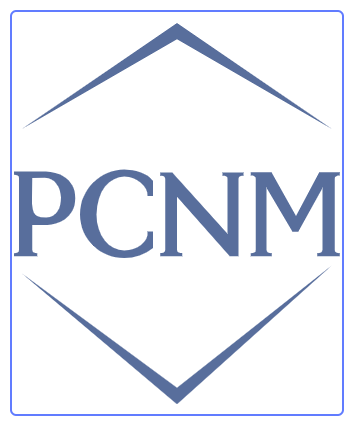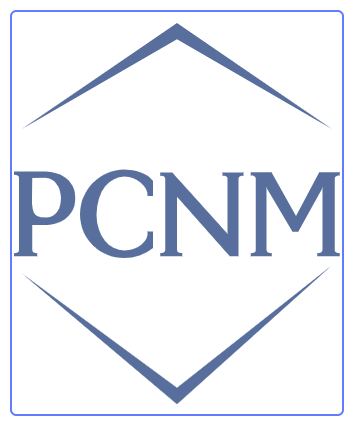
Preventive Care in Nursing and Midwifery Journal

Volume 14, Issue 4 (11-2024)
PCNM 2024, 14(4): 42-51 |
Back to browse issues page
Ethics code: 1400.110
Download citation:
BibTeX | RIS | EndNote | Medlars | ProCite | Reference Manager | RefWorks
Send citation to:



BibTeX | RIS | EndNote | Medlars | ProCite | Reference Manager | RefWorks
Send citation to:
Jalilvand H, Mokhtari Zanjani M, Emamgholi Khooshehchin T. The effect of counseling with a positive approach on anxiety about giving birth to an Infant with Anomalies in pregnant mothers over 35 years of age. PCNM 2024; 14 (4) :42-51
URL: http://nmcjournal.zums.ac.ir/article-1-929-en.html
URL: http://nmcjournal.zums.ac.ir/article-1-929-en.html
Department of Midwifery, School of Nursing and Midwifery, Zanjan University of Medical Sciences, Zanjan, Iran , khoosheh@zums.ac.ir
Abstract: (1026 Views)
Background: Currently, a significant number of women are becoming pregnant after the age of 35. Since advanced maternal age is recognized as a risk factor for adverse pregnancy outcomes and fetal complications, there is a heightened potential for increased anxiety and worry among those who become pregnant at older age. Prenatal counseling can play an important role in reducing anxiety and psychological distress, while also promoting the physical and mental well-being of expectant mothers.
Objectives: The present study aimed to determine the effect of positive counseling on anxiety concerning giving birth to an infant with anomalies in pregnant women over 35 years of age.
Methods: This randomized clinical trial was conducted on 46 pregnant mothers over 35. Participants were conveniently recruited and then randomly assigned to either the experimental or control group using block randomization. The study instrument was the Pregnancy-Related Anxiety Questionnaire (PRAQ; Vanden Berg, 1989). The experimental group received positive counseling in eight 70-90 minute virtual sessions. Data were analyzed using the Chi-square test, independent samples t-test, and covariance (ANCOVA) analysis in SPSS version 22.
Results: The mean scores of anxieties concerning giving birth to an infant with anomalies before the intervention were 16.30 (6.47) in the experimental group and 12.13 (6.31) in the control group. An independent samples t-test revealed a statistically significant difference between the mean pretest scores of the two groups (p = 0.032). After the intervention, the mean scores of anxieties concerning giving birth to an infant with anomalies were 8.56 (4.65) in the experimental group and 13.34 (6.47) in the control group. An ANCOVA demonstrated a statistically significant difference between the mean post-test scores of the two groups (p < 0.001).
Conclusion: Positive counseling reduces anxiety concerning giving birth to an infant with anomalies in pregnant women over 35 years of age.
Objectives: The present study aimed to determine the effect of positive counseling on anxiety concerning giving birth to an infant with anomalies in pregnant women over 35 years of age.
Methods: This randomized clinical trial was conducted on 46 pregnant mothers over 35. Participants were conveniently recruited and then randomly assigned to either the experimental or control group using block randomization. The study instrument was the Pregnancy-Related Anxiety Questionnaire (PRAQ; Vanden Berg, 1989). The experimental group received positive counseling in eight 70-90 minute virtual sessions. Data were analyzed using the Chi-square test, independent samples t-test, and covariance (ANCOVA) analysis in SPSS version 22.
Results: The mean scores of anxieties concerning giving birth to an infant with anomalies before the intervention were 16.30 (6.47) in the experimental group and 12.13 (6.31) in the control group. An independent samples t-test revealed a statistically significant difference between the mean pretest scores of the two groups (p = 0.032). After the intervention, the mean scores of anxieties concerning giving birth to an infant with anomalies were 8.56 (4.65) in the experimental group and 13.34 (6.47) in the control group. An ANCOVA demonstrated a statistically significant difference between the mean post-test scores of the two groups (p < 0.001).
Conclusion: Positive counseling reduces anxiety concerning giving birth to an infant with anomalies in pregnant women over 35 years of age.
Type of Study: Orginal research |
Subject:
Midwifery
Received: 2024/08/24 | Accepted: 2024/11/28 | Published: 2024/11/28
Received: 2024/08/24 | Accepted: 2024/11/28 | Published: 2024/11/28
References
1. Aghili SM, Gholami N, Babaee E. The effectiveness of acceptance and commitment therapy on pregnancy anxiety and physiological parameters of newborns. Journal of Sabzevar University of Medical Sciences. 2023;30(5):645-55. [http://jsums.medsab.ac.ir/]
2. Silva MMJ, Nogueira DA, Clapis MJ, Leite EPRC. Anxiety in pregnancy: prevalence and associated factors. Revista da Escola de Enfermagem. 2017;51:e03253. [https://doi.org/10.1590/s1980-220x2016048003253] [PMID]
3. Dayhimi M, Kariman N, Shams J, Akbarzadeh A. Evaluation of group consulting on pregnancy anxiety: a randomized clinical trial. Advances in Nursing & Midwifery. 2020;29(1):16-21. [https://journals.sbmu.ac.ir/en-anm]
4. Hadfield K, Akyirem S, Sartori L, Abdul-Latif AM, Akaateba D, Bayrampour H, et al. Measurement of pregnancy-related anxiety worldwide: a systematic review. BMC Pregnancy and Childbirth. 2022;22(1):331. [https://doi.org/10.1186/s12884-022-04661-8] [PMID]
5. McCarthy M, Houghton C, Matvienko-Sikar K. Women's experiences and perceptions of anxiety and stress during the perinatal period: a systematic review and qualitative evidence synthesis. BMC Pregnancy and Childbirth. 2021;21(1):811. [https://doi.org/10.1186/s12884-021-04271-w] [PMID]
6. Ahmed Kadim M, Abdulameer Abdulrasol Z, Fadhil Obaid A, Ahmed Hamid H, Hamdi NH, Mousa NA. Assessment of anxiety among pregnant mothers. Iranian Rehabilitation Journal. 2023;21(1):73-80. [https://doi.org/10.32598/irj.21.1.1621.5]
7. Shahhosseini Z, Pourasghar M, Khalilian A, Salehi F. A review of the effects of anxiety during pregnancy on children's health. Materia Socio Medica. 2015;27(3):200-2. [https://doi.org/10.5455/msm.2015.27.200-202] [PMID]
8. Brockington I, Butterworth R, Glangeaud-Freudenthal N. An international position paper on mother-infant (perinatal) mental health, with guidelines for clinical practice. Archives of Women's Mental Health. 2017;20(1):113-20. [https://doi.org/10.1007/s00737-016-0684-7] [PMID]
9. World Health Organization. Maternal Mental Health [Internet]. 2019. [https://www.who.int/mental_health/maternal-child/maternal_mental_health/en/]
10. Rezaee R, Framarzi M. Predictors of mental health during pregnancy. Iranian Journal of Nursing and Midwifery Research. 2014;19(7 Suppl 1):45-50. [https://www.ijnmr.ir/]
11. Madhavanprabhakaran GK, D'Souza MS, Nairy KS. Prevalence of pregnancy anxiety and associated factors. International Journal of Africa Nursing Sciences. 2015;3:1-7. [https://doi.org/10.1016/j.ijans.2015.06.002]
12. Wilska A, Rantanen A, Botha E, Joronen K. Parenting fears and concerns during pregnancy: a qualitative survey. Nursing Reports. 2021;11(4):891-900. [https://doi.org/10.3390/nursrep11040082] [PMID]
13. Taghadosi M, Fahimifar A, Hajirezaee kashan F, Sadat Z. Pregnancy worries in nulliparous women: a qualitative content analysis study. Iranian Journal of Health Education and Health Promotion. 2022;9(4):344-56. [https://doi.org/10.52547/ijhehp.9.4.409]
14. Kar A, Dhamdhere D, Medhekar A. "Fruits of our past karma": a qualitative study on knowledge and attitudes about congenital anomalies among women in pune district, India. Journal of Community Genetics. 2023;14(4):429-38. [https://doi.org/10.1007/s12687-023-00654-y] [PMID]
15. Weathington M, Patterson J, Hickey R. Individualised risks of stillbirth at advanced maternal age: a literature review of the evidence. New Zealand College of Midwives Journal. 2017;(53):15-23. [https://doi.org/10.12784/nzcomjnl53.2017.2.15-22]
16. Ciancimino L, Laganà AS, Chiofalo B, Granese R, Grasso R, Triolo O. Would it be too late? a retrospective case-control analysis to evaluate maternal-fetal outcomes in advanced maternal age. Archives of Gynecology and Obstetrics. 2014;290(6):1109-14. [https://doi.org/10.1007/s00404-014-3367-5] [PMID]
17. Glick I, Kadish E, Rottenstreich M. Management of pregnancy in women of advanced maternal age: improving outcomes for mother and baby. International Journal of Women's Health. 2021;13:751-9. [https://doi.org/10.2147/IJWH.S283216] [PMID]
18. Centers for Disease Control and Prevention. Norovirus: Prevention [Internet]. [https://www.cdc.gov/norovirus/prevention/index.html]
19. Molina-García L, Hidalgo-Ruiz M, Cocera-Ruíz EM, Conde-Puertas E, Delgado-Rodríguez M, Martínez-Galiano JM. The delay of motherhood: reasons, determinants, time used to achieve pregnancy, and maternal anxiety level. PLoS One. 2019;14(12):e0227063. [https://doi.org/10.1371/journal.pone.0227063] [PMID]
20. Hallgrimsdottir HK, Benner BE. 'Knowledge is power': risk and the moral responsibilities of the expectant mother at the turn of the twentieth century. Health, Risk & Society. 2014;16(1):7-21. [https://doi.org/10.1080/13698575.2013.866216]
21. Carolan M, Nelson S. First mothering over 35 years: questioning the association of maternal age and pregnancy risk. Health Care for Women International. 2007;28(6):534-55. [https://doi.org/10.1080/07399330701334356] [PMID]
22. Lampinen R, Vehviläinen-Julkunen K, Kankkunen P. A review of pregnancy in women over 35 years of age. The Open Nursing Journal. 2009;3:33-8. [https://doi.org/10.2174/1874434600903010033] [PMID]
23. Mróz M, Stobnicka D, Marcewicz A, Szlendak B, Iwanowicz-Palus G. Stress and coping strategies among women in late motherhood. Journal of Clinical Medicine. 2024;13(7):1995. [https://doi.org/10.3390/jcm13071995] [PMID]
24. Scott JR, Gibbs RS, Karlan BY, Haney AF. Danforth's Obstetrics and Gynecology. 9th ed. Philadelphia: Lippincott Williams & Wilkins; 2003.
25. Carissoli C, Corno G, Montanelli S, Villani D. Promoting wellbeing in pregnancy: a multi-component positive psychology and mindfulness-based mobile app. In: Perego P, Andreoni G, Rizzo G, editors. Pervasive Computing Paradigms for Mental Health. MindCare 2019. Lecture Notes of the Institute for Computer Sciences, Social Informatics and Telecommunications Engineering, vol 288. Cham: Springer; 2019. p. 229-39. [https://doi.org/10.1007/978-3-030-25872-6_21]
26. Park CL, Moore PJ, Turner RA, Adler NE. The roles of constructive thinking and optimism in psychological and behavioral adjustment during pregnancy. Journal of Personality and Social Psychology. 1997;73(3):584-92. [https://doi.org/10.1037//0022-3514.73.3.584] [PMID]
27. Seligman ME. Positive psychology, positive prevention, and positive therapy. In: Snyder CR, Lopez SJ, editors. Handbook of Positive Psychology. New York: Oxford University Press; 2002. p. 3-12. [https://doi.org/10.1093/oso/9780195135336.003.0001]
28. Waters L, Algoe SB, Dutton J, Emmons R, Fredrickson BL, Heaphy E, et al. Positive psychology in a pandemic: buffering, bolstering, and building mental health. The Journal of Positive Psychology. 2022;17(3):303-23. [https://doi.org/10.1080/17439760.2021.1871945]
29. Matvienko-Sikar K, Dockray S. Effects of a novel positive psychological intervention on prenatal stress and well-being: a pilot randomised controlled trial. Women and Birth. 2017;30(2):111-8. [https://doi.org/10.1016/j.wombi.2016.10.003] [PMID]
30. Xie T, Han L, Wu J, Dai J, Fan X, Liu J, et al. Psychometric evaluation of the pregnancy-related anxiety questionnaire-revised 2 for Chinese pregnant women. Midwifery. 2022;112:103411. [https://doi.org/10.1016/j.midw.2022.103411] [PMID]
31. Rashidalmasi B, Alipoor A, Manesh NE. The effect of positive psychotherapy intervention on depression, stress and happiness infertile women. Family Pathology, Counseling and Enrichment. 2019;4(8):75-88. [http://fpcej.ir/]
32. Van den Bergh BR. The influence of maternal emotions during pregnancy on fetal and neonatal behavior. Journal of Prenatal and Perinatal Psychology and Health. 1990;5(2):119-30. [https://psycnet.apa.org/record/1991-18227-001]
33. Karamoozian M, Askarizadeh G, Behroozy N. The Study of psychometric properties of pregnancy related anxiety questionnaire. Journal of Clinical Nursing and Midwifery. 2016;5(4):22-34. [https://jcnm.skums.ac.ir/]
34. Abbasi M, Maleki A, Ebrahimi L, Molaei B. Effects of supportive counseling using a positive psychology approach on coping patterns among pregnant women with nausea and vomiting. BMC Pregnancy and Childbirth. 2022;22(1):259. [https://doi.org/10.1186/s12884-022-04603-4] [PMID]
35. Emadian O. The Effectiveness of positive thinking training on childbirth fear, and childbirth self-efficacy in pregnant women in sari. Journal of Applied Family Therapy. 2022;3(2):482-95. [https://doi.org/10.61838/kman.aftj.3.2.25]
36. Azadian Z, Oliaei N, Roshani D, Ebtekar F. Comparison of the effects of lecture and cognitive behavioral therapy with a consulting advisory approach on the anxiety level of women with high-risk pregnancy in comprehensive health centers of Sanandaj, Iran. Navid No. 2020;22(72):14-23. [http://navidno.tums.ac.ir/]
37. Andaroon N, Kordi M, Kimiaie A, Esmaeli H. The impact of individual counseling program by midwife on anxiety pregnancy of primiparous women. The Iranian Journal of Obstetrics, Gynecology and Infertility. 2018;20(12):86-95. [http://ijogi.mums.ac.ir/]
38. Bos S, Macedo A, Marques M, Pereira AT, Maia BR, Soares MJ, et al. Is positive affect in pregnancy protective of postpartum depression? Brazilian Journal of Psychiatry. 2013;35(1):5-12. [https://doi.org/10.1016/j.rbp.2011.11.002] [PMID]
39. Corno G, Etchemendy E, Espinoza M, Herrero R, Molinari G, Carrillo A, et al. Effect of a web-based positive psychology intervention on prenatal well-being:a case series study. Women and Birth. 2018;31(1):1-8. [https://doi.org/10.1016/j.wombi.2017.06.005] [PMID]
Send email to the article author
| Rights and permissions | |
 |
This work is licensed under a Creative Commons Attribution-NonCommercial 4.0 International License. |




